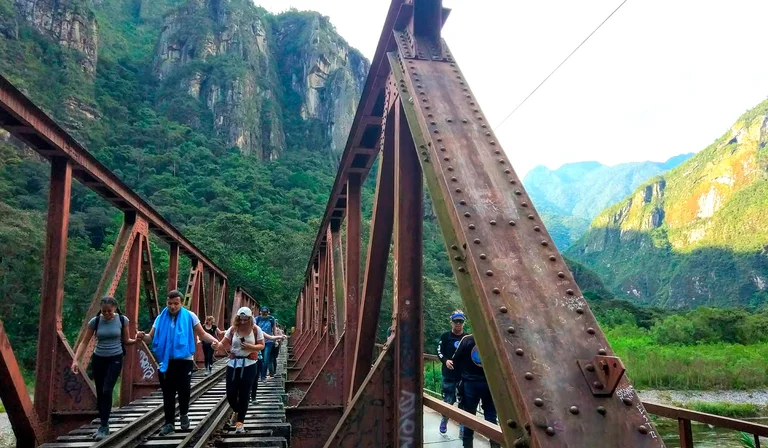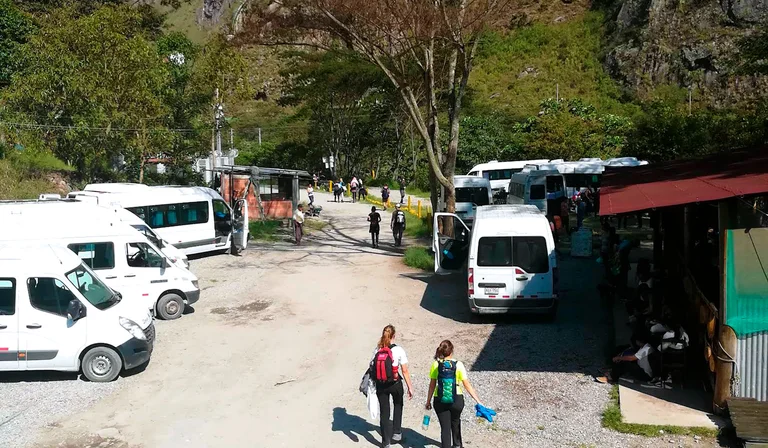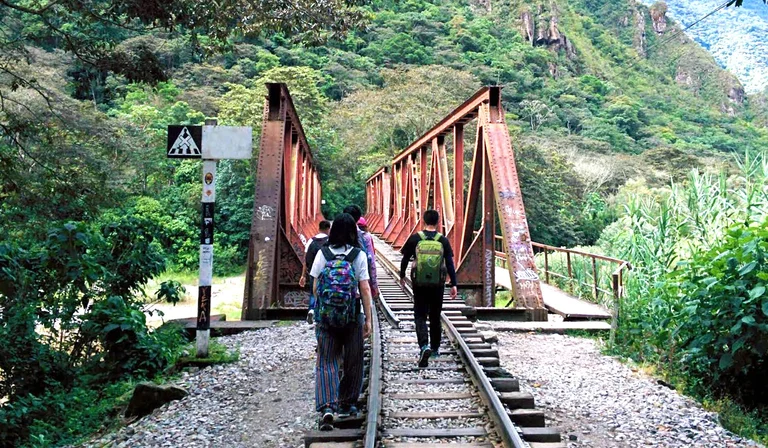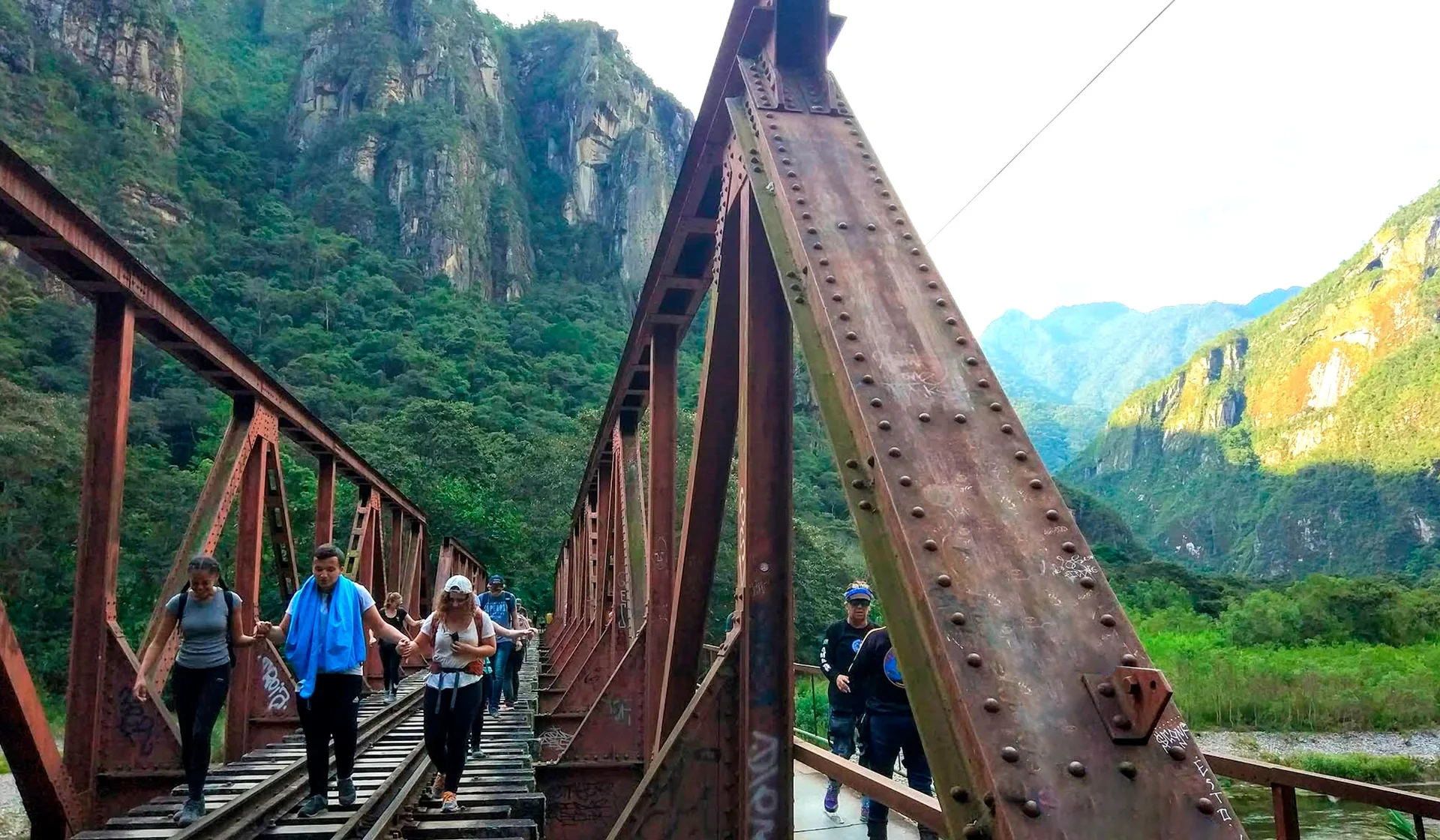Complete Guide for the Hydroelectric to Machu Picchu Hike
Traveling to Machu Picchu via the Hydroelectric route is the cheapest option to visit the historic Inca sanctuary. Choosing this route first involves a long car journey and then a short hike. Learn more about this route and don’t miss out on a more immersive adventure discovering the Inca legacy.

Contents
- How to get from Cusco to Machu Picchu via the Hydroelectric route?
- Transport to Hydroelectric
- The hike from Hydroelectric to Machu Picchu
- Route features
- Travel recommendations
- Frequently Asked Questions
How to get from Cusco to Machu Picchu via the Hydroelectric route?
Choosing to visit Machu Picchu via the Hydroelectric route is one of the best options, not only because it’s the cheapest route, but also because it offers a very immersive adventure where you can discover more of the biodiversity surrounding the Inca citadel along the way.
The journey begins in the city of Cusco, from where you must head toward the town of Santa Teresa, which is a 5-hour car ride. From there, a short 30-minute trip takes you to the Hydroelectric station, where the final stretch to Aguas Calientes (Machu Picchu town) begins.
The hike starts at Hydroelectric and takes approximately 2 hours. Once you arrive in Aguas Calientes, you can either ascend to Machu Picchu by bus (30 minutes) or on foot via a continuous uphill hike (2 hours).
The cheapest route to Machu Picchu
There are many ways to travel to Machu Picchu, each with its own characteristics. Discover the main ones:
- Train Route to Machu Picchu: It’s the fastest and most comfortable route, but also the most expensive (although there are different levels of train service). It departs from Ollantaytambo (2 hours from Cusco) and travels through the most scenic landscapes of the Sacred Valley of the Incas.
- Inca Trail Route: This is the most immersive and adventurous route. It spans 4 days through trails filled with history and exclusive archaeological sites. Nights are spent in campsites surrounded by nature.
- Hydroelectric Route: This is the most economical route, but also the longest. It combines a lengthy journey in tourist transport and a short hike. It’s ideal to do it in two days to allow enough rest.
Transport to Hydroelectric

The best option to travel to Hydroelectric without inconvenience is to rent private round-trip transportation. This way, you’ll have a complete itinerary secured so you can focus solely on enjoying the experience of visiting Machu Picchu.
- The journey begins with pickup from your hotel or a previously agreed-upon point in the city of Cusco. Since it’s private transportation, you choose the time and plan that best suits you.
- The trip lasts 5 hours, passing through Andean landscapes until reaching the high jungle of the town of Santa Teresa.
- Lastly, there is a short 30-minute ride to the Hydroelectric station, where the hike to Machu Picchu begins. The hike to the Inca citadel is not included, but you can also hire a guide to enjoy a more informative experience.
- After your visit to Machu Picchu, and returning via the same hiking route, the transport will be waiting to take you back to Cusco.
The Hot Springs of Cocalmayo
During your trip along the Hydroelectric route, you can make a stop in Santa Teresa to visit the famous hot springs of Cocalmayo. It’s an ideal destination to relax in the middle of nature — a perfect plan to do before the Hydroelectric hike or even after visiting Machu Picchu.
The Hike from Hydroelectric to Machu Picchu
One of the main attractions of the Hydroelectric route is the hike, which is considered an adventure thanks to the impressive biodiversity surrounding Machu Picchu.
The route takes only 2 hours on a flat path, requiring little effort. You’ll only need to focus on carefully observing each of the landscapes along the way.
The trail follows train tracks, so signage is very good. Along the way, you’ll spot a great variety of plants and even some animals characteristic of this area.
At the end of the hike, you’ll arrive in Aguas Calientes (Machu Picchu town), where you can choose to continue walking to Machu Picchu (2 hours) or take a bus (30 minutes).
Route from Aguas Calientes to Machu Picchu
Upon arriving in Aguas Calientes, you can choose to ascend to Machu Picchu either on foot or by bus. Taking the bus is highly recommended, as the trail is steep and involves many stairways. However, for the return, walking down is more appealing since it is easier and shorter (1 hour).
Route Features
|
Category
|
Details
|
|---|---|
|
Route Type
|
Alternative, budget-friendly adventure route. Combines road transport with a hike along the railway surrounded by biodiversity.
|
|
Geographical Location
|
Santa Teresa district, La Convención province, in the Cusco region, Peru.
|
|
Climate
|
Humid, typical of the high jungle region.
|
|
Approximate Duration
|
|
|
Key Altitudes
|
|
|
Flora
|
Wild orchids, bromeliads, bamboo, giant ferns, and avocado, banana, and coffee trees.
|
|
Fauna
|
Cock-of-the-rocks (Peru’s national bird), hummingbirds, parrots, multicolored butterflies, capuchin monkeys, occasionally the Andean bear, among many others.
|
|
Advantages
|
|
|
Disadvantages
|
|
|
Best Season
|
April to October, dry season: more stable weather, better road conditions, and lower chances of rain.
|
Recommendations for Your Trip

- Along the Hydroelectric route, you’ll be at an altitude of approximately 1,900 meters above sea level, which means you can walk without major breathing difficulties, unlike the higher altitude of Cusco (3,399 meters above sea level).
- Use insect repellent during the hike and upon arrival at Machu Picchu—it’s essential, as this area is known for having many mosquitoes.
- At the beginning of the route, you’ll find many food stalls and basic necessity shops, helping you better prepare for the walk.
- You won’t need to book well in advance to use the Hydroelectric route—just a few days ahead is enough.
- However, for Machu Picchu entrance tickets, you must book in advance—one month is usually sufficient. But if you want to hike one of the more popular routes, such as Circuit 2 or Huayna Picchu Mountain, you’ll need to book about three months in advance.
- You can take advantage of your stay in Santa Teresa to visit the popular Cocalmayo hot springs—an unforgettable experience that perfectly complements the Hydroelectric route.
- The Hydroelectric hike is suitable for all ages and considered low difficulty, making it a great option for the whole family.
- Choosing private transportation for this route offers greater safety, comfort, exclusivity, and scheduling flexibility—allowing you to enjoy your journey worry-free with personalized service.
- Remember, you can book your Hydroelectric route experience with Carmachupicchu. Talk to our advisors to explore all your options for making your trip to Machu Picchu truly unforgettable.
